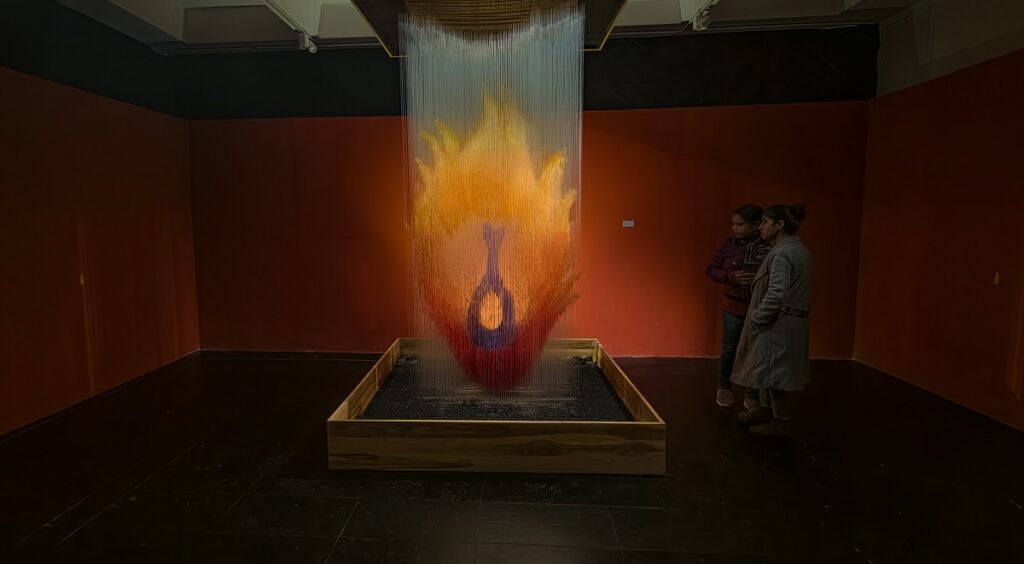The National Gallery of Modern Art (NGMA) in Mumbai inaugurated the exhibition “Ramaynam Chitrakavyam & Shakti: Fair & Fierce” on 8 June 2024, featuring the works of various artists, including renowned artist Charuvi Agrawal.
The exhibition witnessed the presence of esteemed guests: Museum of Sacred Art, Belgium founder & director Martin Gurvich as the guest of honour, and Government of India cultural minister and NGMA director general Dr. Sanjeev Kishor Goutam as the chief guest for the inauguration ceremony.
The centrepiece of this exhibition was a stunning 10-foot installation made of over 150,000 hand-blown glass beads by Agrawal. This masterpiece showcased the power of the female figure as a representation of omnipresence and higher consciousness.
“Through art, we have the power to illuminate the essence of humanity, transcend boundaries, and inspire change. Shakti: Fair & Fierce celebrates the resilience, creativity and indomitable spirit of women artists, providing a platform to amplify their voices and honour their invaluable contributions to the artistic landscape,” said CDL (Charuvi Design Labs) director Agrawal.
She proudly presented her latest artwork, “Lumena” at NGMA. This work garnered widespread acclaim for its ability to evoke emotion, spark dialogue, and inspire change. Lumena brought the concepts of kundalini, a central tenet in Shakti, closer to the serenity and power of Kali. The flames in the artwork represented her supreme transformative power across the universe, bringing purity and balance. The serpentine figures symbolised wisdom and protection, representing a duality leading to transformation.
Additionally, the exhibition featured Agrawal’s notable works “Kavad” and “Eterna,” each highlighting different aspects of her artistic journey and creative focus. Kavad delved into the intricate narratives of Indian mythology through traditional storytelling techniques, while Eterna explored the eternal nature of life and consciousness through modern interpretations.
Eterna is an exploration of a formless energy that gracefully adapts to the diverse needs of humanity. Evoking the essence of Shakti and drawing inspiration from the ancient tales of the Mother Goddess, the artwork seamlessly weaves together mythology and contemporary symbolism.
The installation Lumena featured intricate depictions of the Ida and Pingala, representing the basic duality in existence, traditionally personified as Shiva and Shakti. The serpent was a powerful symbol of kundalini shakti, the dormant spiritual energy that lies coiled at the base of the spine. When awakened, this energy rises through the chakras, or energy centres in the body, to bring about spiritual awakening and transformation. Additionally, the snake is a symbol of protection and wisdom, often associated with the goddess Durga, a form of Shakti.
The flame signified wisdom and knowledge essential for attaining spiritual awakening. Kali, often depicted with a tongue of fire, represented her transformative power and the burning away of ignorance and negative karma. The snake and flame together symbolised spiritual awakening, protection, and purification, and are commonly used in Hindu rituals to honour and invoke the goddess.


